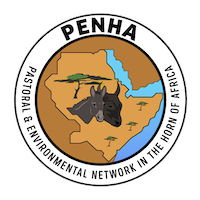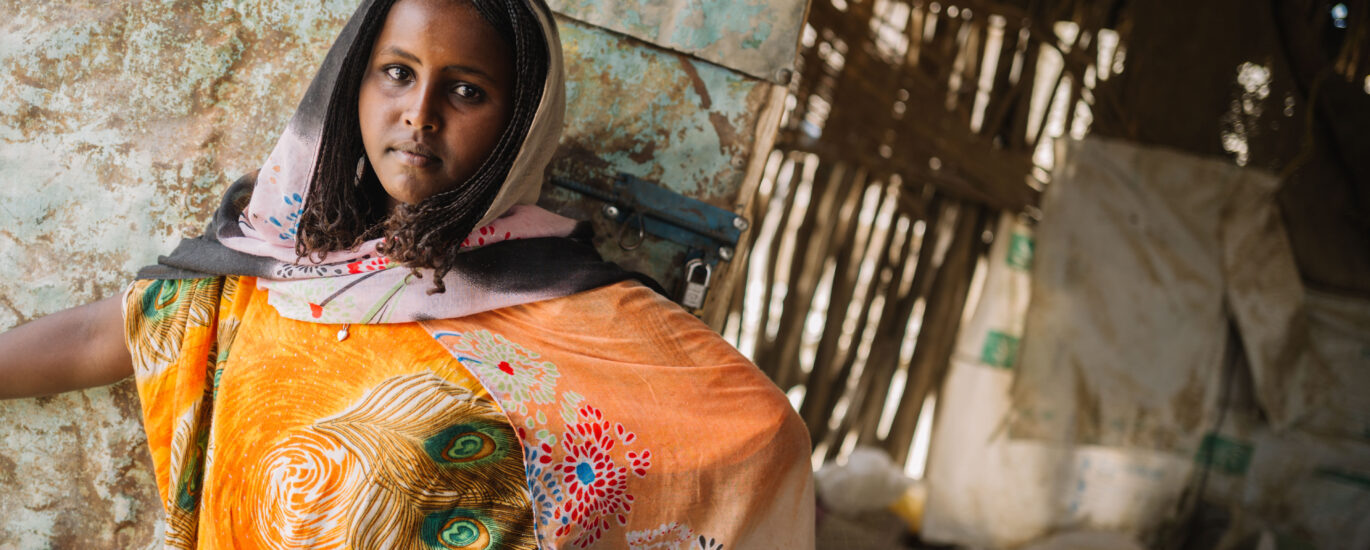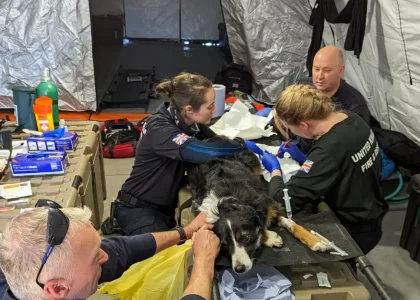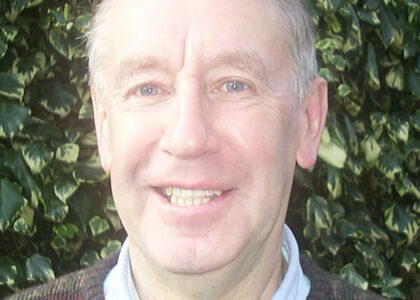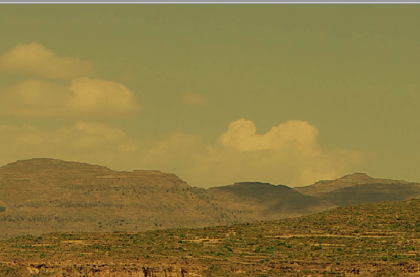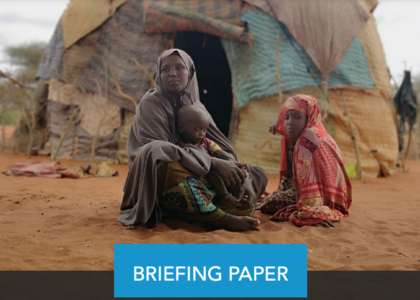By Nicole Kenton
Pastoral communities around the world are building on their centuries-old coping strategies to complement their traditional herding practices with alternative means of livelihood. In the Afar region of north-east Ethiopia, in addition to rearing livestock, pastoralists are growing crops, trading salt, keeping bees, selling firewood and charcoal, or doing manual labour to earn extra household income. Women are making handicrafts to sell at markets and rearing and trading small stock, and young people are migrating to urban areas to work and send back remittances to their families.
A diversification of livelihoods has been crucial for the survival of many communities across Africa in the face of increasing stresses – climatic, environmental and political. Persistent droughts since 2008 and the effects of El Niño have resulted in food shortages and malnutrition. For pastoralists in particular, resource and land grabbing, such as for mining by private sector actors, has restricted grazing areas, leading to conflicts between herders and threatening their nomadic lifestyle. In the Horn of Africa, regional insecurity is blocking transhumant and trade routes across national borders, such as between Eritrea and Ethiopia.
Despite their resourcefulness, the resilience of pastoral communities is being seriously challenged by these threats. Recent figures show that 14.6 million people in the region are severely food insecure – 8.5 million of whom are in Ethiopia. This is despite government investment in social protection programmes which target chronically food-insecure households, particularly in the rural areas.
The Afar people receive government support during the lean season in the form of food transfers under the multi-million Productive Safety Net Programme (PSNP), which is one of the biggest on the continent. They receive wheat for six months of the year, which helps them to feed themselves. The PSNP has been running since 2005, providing food as well as cash transfers to poor households to enable them to resist shocks, create assets and become food self-sufficient. Distribution of the transfers is based on season and need, with food given primarily between January and July. In exchange for food, besides those under direct support, beneficiaries also engage in public works activities, such as environmental conservation and infrastructure building. Now in its fourth phase, the PSNP has had variable levels of success, with less of an impact on poverty reduction and food security in remote rural areas, such as the Afar region.
Afar is an arid lowland area predominantly comprised of pastoralists (90%) and agro-pastoralists (10%), and over 95% of the region’s 1.5 million population is dependent almost entirely on livestock production for their livelihood. The Afar people are known for their strong social bonds and resource sharing among their members through kinship networks of reciprocal solidarity, where a better-off person supports the poor. However, families are struggling, or only just about able to support themselves, let alone help others, even with the government’s help. In order to survive long periods of food insecurity and increases in market prices, and even while diversifying their livelihoods, they are forced to deplete their assets – their livestock.

Their survival strategies are also impacting on their social dynamics and have brought some positive outcomes, such as women becoming empowered economically. However, other activities, such as cutting down trees for firewood and charcoal are not sustainable and are harming the environment, which also affects the severity of future droughts. The outmigration of youth, although bringing short-term gains, will result in future generations abandoning traditional herding.
A recent Netherlands-funded collaborative research project – Social Protection for Inclusive Development in Afar of Ethiopia (SPIDA) – has found that the PSNP, despite its contribution to increasing household food supply, is not really tailored to meet the needs of nomadic pastoralists in arid regions, such as the Afar community.
With the support of local institutions, these pastoral communities are now joining the policy debate, arguing that a one-size-fits-all safety net is not working for them. Their challenges are multi-faceted, and inseparable from, but not limited to the current drought. Aside from food shortages which affect both people and their cattle, there is a lack of suitable infrastructure, including electricity, lack of sanitary latrines and lack of access to local and regional markets. In addition, education and healthcare is poorly resourced, and they lack access to credit and cooperatives that can assist in asset building and economic diversification.
Currently, PSNP public works are carried out for six months on the year (January to June) and have a focus on activities such as soil and water conservation and terracing, which are more applicable to conditions in the highlands and to sedentary communities. In addition, the government’s Household Asset Building Programme (HABP), which also provides help to food-insecure households through a robust productivity oriented approach, has not yet been implemented in the Afar region. This is due to the risk associated with loan default from the government’s side, and religious reasons which forbid interest-bearing lending and borrowing in this predominately Muslim region. So both these policies need to be linked and adapted to the cultural and environmental setting of those living in the arid lowlands. A more targeted approach to social protection which takes on board the particular challenges and livelihood needs of these communities, as well as their cultural and social practices and values, is therefore crucial for their self-reliance.
Recommendations by the communities to adapt social protection initiatives include changing the targeting period to reflect the various livelihoods systems of mobility and agro-pastoralism, distributing supplementary food, such as rice, providing animal fodder and marketing opportunities, and making mobile animal clinics accessible, given the high rate of animal disease and mortality in periods of drought. This targeted assistance will help pastoralists retain their assets, especially during the dry season.
Tailored policy options are now being considered by the government of Ethiopia to ensure inclusive development in the region. This demonstrates that the success of any policy depends on community participation in the policy design to incorporate local needs and solutions. It is imperative that the Afar community’s social and cultural values and institutions be taken into consideration, and support given for financial inclusion, economic innovation and diversification by women and youth in particular. With multiple drought and livelihoods related interventions going on in the Afar region, there is also a need for an integrated approach. As its name indicates, the productivity element of the PSNP needs further investment so as to boost the resilience of these pastoral and agro-pastoral communities and help them transform their livelihoods into a robustness and resilience which protect them from predictable and unpredictable risks.
The evolving nature of pastoralism holds many possibilities and presents resilience in the face of ongoing and future external threats. Linkages between rural and urban areas are providing new trading partners and opportunities, helped by mobile technology. Despite being a highly debatable policy, the expansion of sedentarisation is bringing new income sources, with changing gender roles leading to economic diversification and a feminisation of pastoralism. Access to nomadic education is reducing instances of early marriages which have hindered the continued education of girls. These transformations need to be supported by development interventions in ways that also sustain the traditional livelihoods and mobility of these communities, so that they are empowered to take control of their destinies – and go beyond mere survival.
Photo credit: Multiple challenges are bringing new opportunities to pastoral women. Jeff Salzer/PENHA 2016.
Map credit: Map showing Afar regional state. Credit Zubairul Islam, Adigrat University, Ethiopia.
Nicole Kenton is an independent international development consultant.
References:
Fre, Z., Temesgen, G., Negash, Z., Araya, S. T., Tsegay, B., Teka, A. M. and Weldesilassie, B. (2017). Social Protection for Inclusive Development in Afar Region of Ethiopia: Participatory Rural Appraisal Report, SPIDA Working Paper Series-SPIDA/WPS/102/2017, September 2017.
UN Office for the Coordination of Humanitarian Affairs. (2018). Humanitarian Outlook: Horn of Africa January-June 2018. https://reliefweb.int/report/world/humanitarian-outlook-horn-africa-january-june-2018
World Food Programme. (2012). Productive Safety Net Programme (PSNP). www.wfp.org/sites/default/files/PSNP%20Factsheet.pdf
